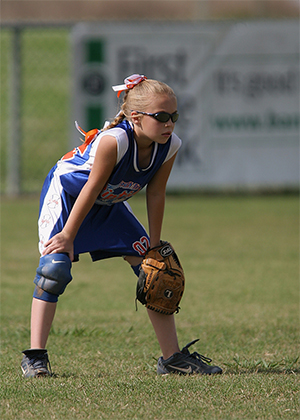 |
Especially with recent advances in photochromics allowing them to adjust darkness according to both UV and visible light, they’re the ideal lens for athletes for a number of reasons. Playing on a bright, sunny day? The lenses will be dark and allow the player clear visibility, preventing them from potentially stumbling or even missing their objective. Partially cloudy and overcast? The minimally dark lenses will abate glare. And if that game goes on longer than anticipated and heads into the twilight or after-dark hours? Those clear lenses will ensure great nighttime visibility. Rather than having to juggle a pair of sun sports frames and a clear pair that risk getting lost in transit or prove time consuming to switch between, a pair of sport frames with photochromic lenses (always in polycarbonate or Trivex, of course) gives the patient the versatility of dozens of pairs of glasses.
While different patients may have different preferences for color, a solid go-to—and one I’ve never heard any complaints about—is a brown shade, which provides a high level of contrast for the wearer and, especially against the backdrop of a green field, allows for better visibility of the ball. It’s a soothing shade that’s just dark enough to alleviate eyestrain while also not potentially impeding vision the way a darker color might. It’s always important to quiz your patient on precisely when, where, and how they’ll be using their sport frames so they can make an informed decision. Photochromics make an almost necessary addition to any spring or summer athlete’s sport frames. It’ll keep them safe, enhance their game, and help them meet their figurative—and literal—goals.
Learn how to guide the sports enthusiast to the best lens and frame for comfort and visual performance with our CE, Mapping a Course for Growth with Sports Performance Eyewear, at 2020mag.com/ce.













